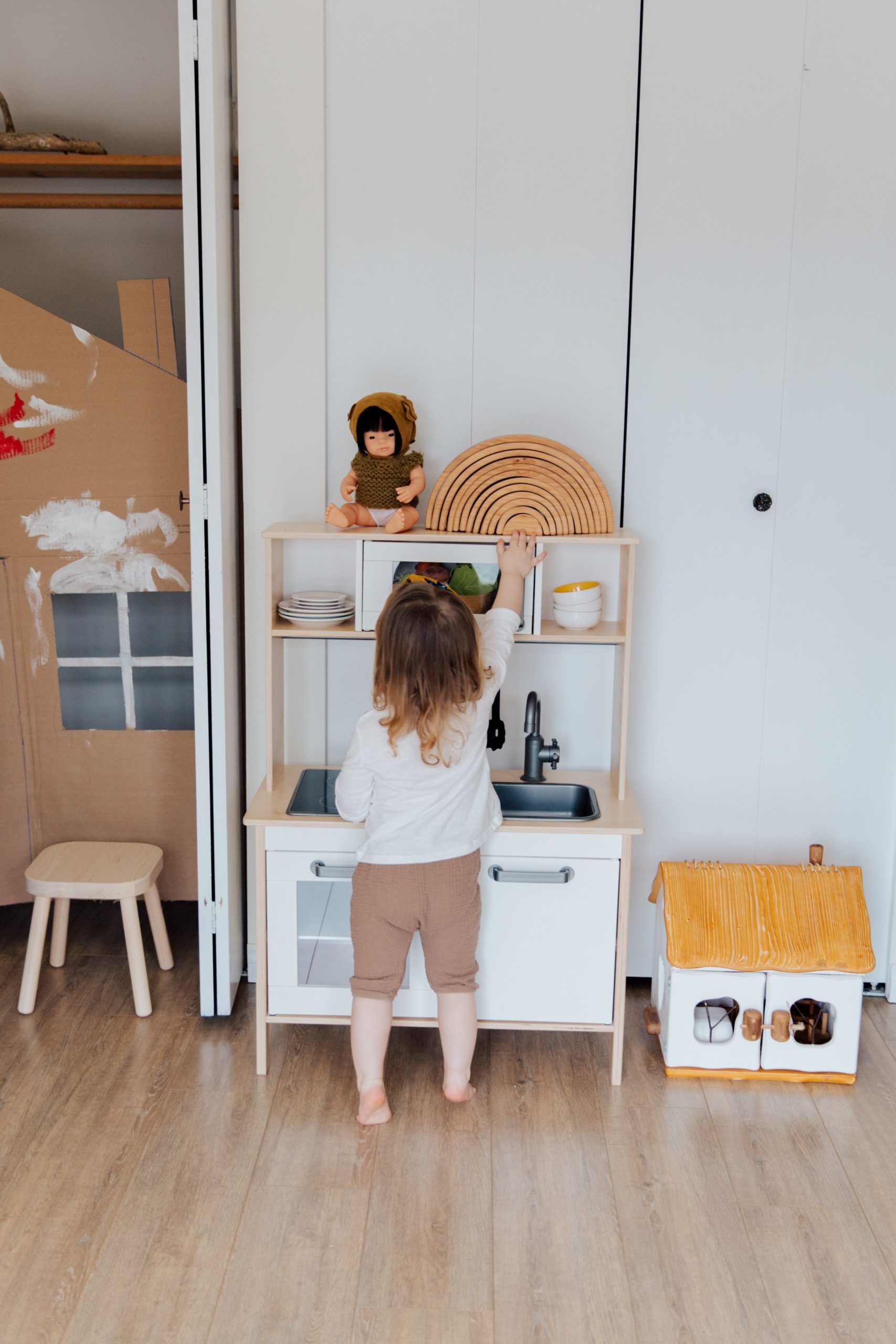How to create a Montessori environment at home
Your child doesn’t have to attend a Montessori school for you to be able to implement the method at home. Creating a Montessori environment at home will help promote independence and creativity through hands-on learning, imagination, and self-awareness. A prepared environment will help benefit your child’s growth through these stages of development. Integrating a Montessori environment at home allows the child to express themselves through exploration and independence and instills that love of learning.
Start by purchasing child-sized furniture. Having materials and objects at their height, including shelves and cubbies, will promote independence and self-confidence. The more your child can do independently, the more this will foster self-motivation. Maria Montessori said, “Never help a child with a task at which he feels he can succeed.”
Whether you are creating this environment in your child’s bedroom or playroom, it’s essential that everything has a place and there is no clutter. Less is more. The tidier and more organized their environment is, the calmer they will be. Assure that everything has a place. Children love a sense of order. Montessori classrooms are simplistic, which enables children to explore and have freedom within limits.
A great way to help stay organized is by purchasing baskets and trays to put toys and learning materials on. Alternate these materials and toys once a month and see how excited and interested your child will be, this will also help prevent boredom. Remember to have your child clean up by themselves and put things back where they belong.
Create designated areas that can help provide peace and creativity. A reading corner and an art area are great spaces children enjoy spending a great deal of time in. In addition, create a large area in the room for oversized toys such as floor puzzles or blocks. Providing designated areas for different activities will help your child stay more focused.
Stick to decorating your room with neutral colors. These colors tend to be more calming and soothing, while bright colors tend to be more stimulating. Consider hanging artwork and decorations at their eye level so they can enjoy and engage in them. Children love to appreciate art!
Add things your child can help take care of. A great example would be planting and helping to care for a fish. Learning to care for one’s environment is a big part of Montessori. They can water the plants and trim off the dead leaves. You can place a little pitcher and child scissors on a tray next to the plant to encourage your child to water the plant and cut off the dead leaves when necessary.
Add items to your home that encourages independence. Step stools, hooks, a broom, and a dustpan are some great examples. If your child can reach things by themselves, they will be more inclined to do tasks.
Have a designated drawer in the kitchen for them, along with the appropriately sized utensils. Try finding little choppers, an apple, egg, banana slicer, little pitchers, tongs, wooden spoons, rolling pins, etc. Having items that fit their small hands will help strengthen their fingers and be more comfortable while they’re helping.
Conclusion:
While creating this environment at home, remember to observe your child. You will be able to see what their interests and dislikes are. Is there something too challenging or too easy?
By making these observations you can sustain and create a successful environment for your child. Remember to let them learn without interruption. Foster your child’s natural curiosity and independence by allowing them to learn through exploration, touch, and imagination. Also, look into touring a Montessori school. You will be able to observe how the method works and how the teachers interact with the children. By creating the right environment, you are supporting and encouraging your child’s interests. Encouraging their exploration, creativity, and independence during these early years is vital to their development.

